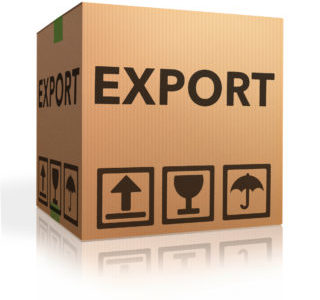Cannabis and International Trade: Never the Twain Shall Meet?
Medical MarijuanaRecreational MarijuanaUncategorized February 4, 2019 MJ Shareholders


Recently, we’ve been getting tons of questions from clients regarding the international import and export of cannabis around the globe. 2018 was a historic year for the cannabis industry not just in the United States, but also internationally. Canada legalized recreational marijuana for the entire country. Many countries (e.g., Thailand, New Zealand, Mexico, Lithuania, U.K.) took significant steps to decriminalize or legalize medical or recreational marijuana. In December, Israel became the fifth country to pass legislation legalizing the export of medical marijuana (after the Netherlands, Canada, Uruguay, and Australia).
Despite these advances, international trade in legal marijuana currently is limited. Under a 1961 international treaty (Single Convention on Narcotic Drugs), cannabis is classified as a controlled substance with no medicinal use or value (we explored this recently here). Most countries are signatories to this and other international treaties that set forth the ground rules for the international drug control regime for controlled substances. Individual countries, however, can and have begun to make their own determinations on whether cannabis should be treated as a narcotic substance. Countries that have legalized marijuana can agree to allow trade in marijuana between those countries. Dutch and Canadian companies have gotten a head start in the global marijuana trade with medical marijuana being exported to Germany, Italy, Croatia, Australia, New Zealand, Brazil, and Chile. Currently, Israel, Australia, Uruguay, and others are also pushing to get into the medical marijuana export game.
While other countries have begun to legalize cannabis, the United States federal government still classifies “marijuana” as a Schedule I controlled substance with no medical use and a high potential for abuse. Thus, federal law effectively prohibits importation of marijuana into the United States. In September 2018, however, the U.S. Drug Enforcement Administration (DEA) granted permission for a Canadian marijuana company (Tilray) to export medicinal cannabis to University of California San Diego for clinical trial. Although DEA’s approval of this importation may be just a one-off, this one approval could signal an eventual broader opening of the U.S. market to imported marijuana.
If (or when) the U.S. finally allows the importation of cannabis products from other countries, it seems likely that some type of trade dispute will likely occur. Legalization of marijuana has often resulted in supply and demand imbalances that result in prices rising or falling sharply. In Oregon, prices for licensed marijuana plummeted with overproduction, and nearly 70 percent of the legal recreational marijuana grown has gone unsold. In Canada, medical marijuana dispensaries faced shortages as licensed producers shifted to selling to the much larger legalized recreational marijuana market. Italy faced consistent shortages of medicinal marijuana and ultimately permitted imports from Canadian companies to ease the supply shortages.
Trade disputes often result when producers in one country complain that imports from another country are being sold at unfairly low or subsidized prices and harming the domestic industry. Domestic producers can petition their government to investigate imported products and often antidumping or countervailing duties are imposed. If imported cannabis products are allowed into the U.S., it would not be surprising if U.S. marijuana producers resort to U.S. trade laws in order to fend off import competition. Which countries might be likely targets of a cannabis trade dispute?
- Canada –Given the head start that Canadian cannabis companies already have in developing international distribution networks in a number of countries, bigger and better funded Canadian companies could swoop in and aggressively price their product to overwhelm U.S. competitors and take over a dominant market share in the United States. U.S. cannabis companies could try to seek trade protection from Canadian imports by filing antidumping or countervailing duty petitions like those filed against Canadian softwood lumber in multiple rounds going back to the 1980s.
- Mexico – Mexico’s new President Lopez Obrador has proposed legislation to legalize marijuana. If Mexico ever legalizes exports of licensed marijuana, Mexico’s relatively lower farm labor rates could provide significant cost advantages over U.S. or Canadian licensed suppliers.
- China – Although marijuana is illegal in China, China is nevertheless the world’s leading producer of industrial hemp cultivation. China likely will have a significant advantage in producing more cost-effective hemp fabric and medicinal products than any other country. As of 2017, Chinese companies hold more than half of the 606 patents filed around the world that relate to cannabis. These patents could trigger plenty of litigation as companies try to attack or defend the intellectual property rights of their hemp products.
It’s hard to think of international trade disputes involving cannabis when it is still illegal for marijuana to cross U.S. state borders, let alone international borders. But as the trend of marijuana legalization continues globally, it is likely a matter of time before licensed marijuana products become treated like any other commodity subject to competitive market forces and resulting litigation over fair and unfair competition. Once imported marijuana products are allowed, it is not difficult to foresee the day when import competition in the legal marijuana markets may trigger some type of international trade dispute either in the form of an antidumping or countervailing duty petition or a patent infringement action.
MJ Shareholders
MJShareholders.com is the largest dedicated financial network and leading corporate communications firm serving the legal cannabis industry. Our network aims to connect public marijuana companies with these focused cannabis audiences across the US and Canada that are critical for growth: Short and long term cannabis investors Active funding sources Mainstream media Business leaders Cannabis consumers










